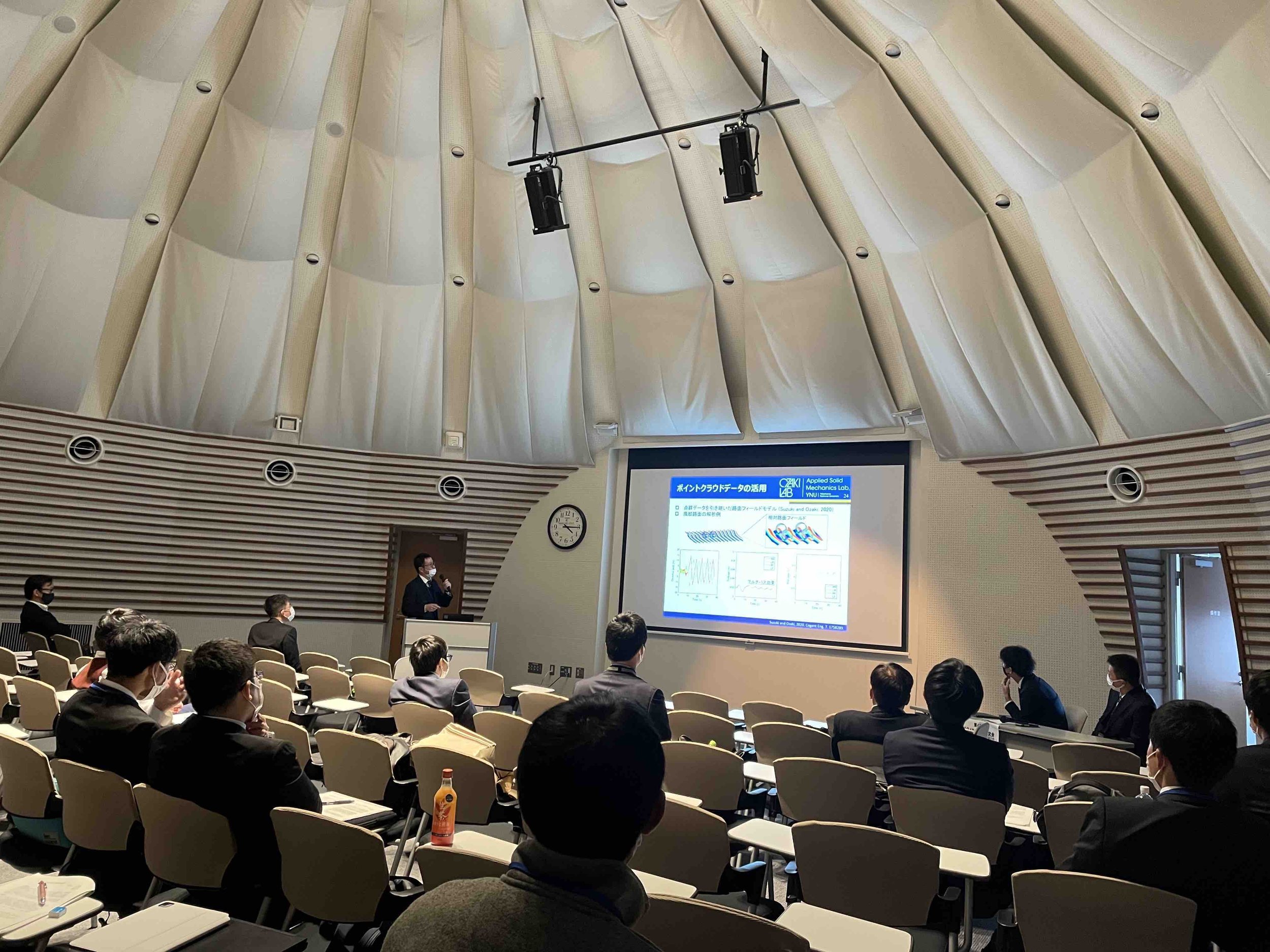by Junya Yamakawa, ISTVS Deputy General Secretary for Asia-Pacific
The 43rd annual meeting of the Japanese Society for Terramechanics was held November 13-16. This association has been in existence for over 40 years. While for the past two years the event was held online, this year happily we were able to meet on-site at the Okayama University of Science campus, hosted by Professor Tetsuya Kinugasa, in Okayama Prefecture (about 200 km west of Kyoto) and attracted more than 30 participants.
On the first day, we visited a quarry that produces the MAN-NARI-stone, cherry-blossom color granite with white and black speckles. MAN-NARI-stone is a beautiful stone used for building walls, floor decorations, and tombstones. We also visited a processing plant where stones from the quarry are cut and polished.
The second site we visited was Toda-Racing, a small but impressive automotive company that has the technology to do everything from vehicle design to manufacturing on its own. They have a proven track record, especially in e-race cars and compact, high-performance engines. They also work on custom-made vehicles that fulfill the owner's requirements.
Sixteen presentations were given over the two days of meetings. The content ranged from construction equipment to rovers and simulation methods. Construction equipment-related topics included the relationship between the force acting on the digging blade and soil strength, the relationship between the cone index and the resistance force acting on the bucket, and those related to soil compaction evaluation.
Regarding the propulsion of an exploration rover in sandy soil, there were presentations on a strategy for propulsion using a settling wheel as a supporting point, and a robot that propels itself by simulating the movement of a lizard. Other presentations included motion analysis of a multi-legged centipede robot, optimization of flipper arm use to overcome uneven terrain such as rubble, simulation methods on DEM and extended classical Terramechanics models, and the impact of ash fall on vehicle drivability in volcanic eruption disasters.
In addition, several attempts to utilize AI technology for estimating soil and sand properties, for example, estimating grain size distribution by analyzing drilling sound, were presented. This research is greatly anticipated as a new direction for terramechanics in the future. During the break, Professor Kinugasa gave a demonstration of his centipede-shaped robot.







